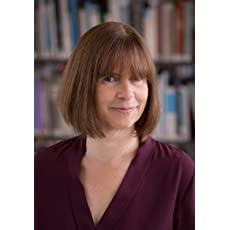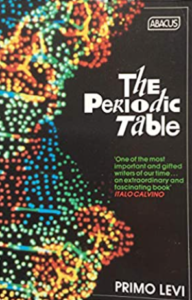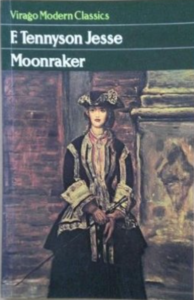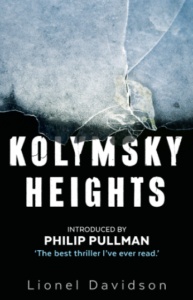Decades: Compiling the Ultimate Library with Fiona Erskine
Yesterday I reviewed Phosphate Rocks by Fiona Erskine. It is mid June 2021 and Phosphate Rocks is easily the best book I have read so far this year. If you haven’t heard me raving about how much I enjoyed it then I would urge you to read this post then read my review (I shall pop a link at the bottom of the page).
Today Fiona is back and taking on my Decades challenge. Each week I invite a guest to join me and I ask them to help me assemble a Library of the very best books. Each guest has just two rules to follow:
1- Choose ANY five books
2 – You may only choose one book per decade over five consecutive decades.
My aim is, with the assistance of my guests, to get the very best selection of books into a Library which began with zero titles on the shelves. The literary quest began six months ago and on a weekly basis I get feedback from guests (past, present and future) who curse me for imposing those two rules on their selections and the flexing of the rules has been varied and impressive. You are in for a treat today as the most impressive flexing of the rules is about to be revealed…it’s a good job I loved Phosphate Rocks or there may have been a need for a VAR ruling – you will see what I mean 😉
DECADES
I’m Fiona Erskine and I started writing after a skiing accident gave me some unexpected time off from my day job as a professional engineer.
 My first novel, The Chemical Detective, introduces explosives expert Dr Jaq Silver, blowing things up to keep people safe as she tracks a criminal gang from the ski-slopes of the Slovenian Alps to the ruins of Chernobyl. My second novel. The Chemical Reaction, opens with Jaq in trouble on a yacht in the Black Sea. When she blows it up to rescue her crewmate, she has to find a way to pay the owner back. Taking a risky job in China, she finds herself fighting for her life the shadow of the infamous Banqiao Dam. My thrillers have been shortlisted for The Specsavers Debut Crime Novel Award and The Staunch Prize and I’ve signed a deal with Point Blank to produce at least 2 more in the Jaq Silver series.
My first novel, The Chemical Detective, introduces explosives expert Dr Jaq Silver, blowing things up to keep people safe as she tracks a criminal gang from the ski-slopes of the Slovenian Alps to the ruins of Chernobyl. My second novel. The Chemical Reaction, opens with Jaq in trouble on a yacht in the Black Sea. When she blows it up to rescue her crewmate, she has to find a way to pay the owner back. Taking a risky job in China, she finds herself fighting for her life the shadow of the infamous Banqiao Dam. My thrillers have been shortlisted for The Specsavers Debut Crime Novel Award and The Staunch Prize and I’ve signed a deal with Point Blank to produce at least 2 more in the Jaq Silver series.
My latest book Phosphate Rocks: A Death in Ten Objects is a fictionalised account of my very first graduate job. A body is discovered in the ruins of a defunct fertiliser factory, encased in phosphate rock. The police work with retired shift foreman, John Gibson, to try and identify the deceased from the ten objects found with the mummified corpse.
I’m thrilled to have been invited to contribute to Decades. It’s a totally engaging idea, and one I have had some fun with. As well as some pain.
1950 – 1990
1958 Our Man in Havana by Graham Greene – Cuba
1966 The Jewel in the Crown by Paul Scott – India
1975 The Periodic Table by Primo Levi – Italy and a German concentration camp
1981 Moonraker by F. Tennyson Jesse – Haiti and the Carribean
1994 Kolymsky Heights by Lionel Davidson – Canada to Japan to Russia
1950
 I’ve always loved reading, especially on trains, and my first choice has to be Graham Greene. His books were the perfect length for a journey between Edinburgh (where I was born and went to school) and Cambridge (where I went to university) with a chapter left over for bedtime. Greene was the first author I trusted enough to buy a book based on the writer rather than on the subject matter. I loved the distinctive covers, white with big black letters plus an orange penguin. The books were deceptively slim, but always packed a punch. Aged 17 (and described by a great-aunt as an illiterate alcoholic), I wouldn’t normally have chosen stories about vacuum cleaner salesmen, defrocked priests or lepers but over the next four years I devoured every novel Graham Greene had written. And grew up.
I’ve always loved reading, especially on trains, and my first choice has to be Graham Greene. His books were the perfect length for a journey between Edinburgh (where I was born and went to school) and Cambridge (where I went to university) with a chapter left over for bedtime. Greene was the first author I trusted enough to buy a book based on the writer rather than on the subject matter. I loved the distinctive covers, white with big black letters plus an orange penguin. The books were deceptively slim, but always packed a punch. Aged 17 (and described by a great-aunt as an illiterate alcoholic), I wouldn’t normally have chosen stories about vacuum cleaner salesmen, defrocked priests or lepers but over the next four years I devoured every novel Graham Greene had written. And grew up.
For this (fiendish…shakes first and curses) challenge, Graham Greene also brings the huge advantage that I could have chosen almost any one of his novels written between 1929 and 1990.
Our Man in Havana (1958) by Graham Greene.
Our Man in Havana is the story of a salesman in Cuba who tries to make a bit of money on the side as a spy. There’s a gulf of understanding between those in headquarters and those in the field which James Wormold exploits to his advantage, fabricating information, sketching his own vacuum cleaner nozzles at giant scale as proof of a military installation in the mountains. Credulous M16 take it all at face value and send reinforcements. But lies have a habit of coming back to bite their creator. I must just add that the hapless spy genre is alive and kicking as demonstrated by my favourite book of 2021 so far – Starlings of Bucharest by Sarah Armstrong.
1960
The Jewel in the Crown (1966) by Paul Scott
I recently listened to an audio version of the Raq Quartet series, and it reminded me how much I adored these books first time round. One of my Edinburgh primary school teachers, Mrs Harris, had lived in India in Raj times and told us extraordinary stories, which flooded back as I read these books. I have chosen the first in the series, The Jewel in the Crown. Set in the 1940’s it tells the story of Hari Kumar, returning to northern India after an education at an English public school. He is rejected by both the English rulers and his fellow Indians. When Daphne, an awkward English girl, tries to help Hari, things do not end well. It’s wonderfully perceptive exploration of racism, of control of the many by the few, a theme that recurs in Abir Mukerjee’s recent (and wonderfully nuanced) Wyndham & Banerjee novels which I wholeheartedly recommend.
1970
The Periodic Table (1975) by Primo Levi
 If I had to choose a single book that changed my life, then it would be The Periodic Table by Primo Levi. While I was still a student, I spent a summer in Sri Lanka with a group of volunteers. The stated mission was to build a road to connect two villages in the mountains near Kandy. It soon became clear that our real job was to provide entertainment for a group of young people who had been persuaded onto a work experience program to keep villagers away from the big bad cities. The socio-technical project was impossible: the terrain impenetrable, the tools (pickaxes and udeles – a sort of crude right angled shovel) blunt and heavy and the cities exciting. We did a lot of singing and dancing instead, teaching each other our languages with stories and jokes – although everyone found the big white people hilarious even without a punchline. We also shared books which led to my discovery of Primo Levi.
If I had to choose a single book that changed my life, then it would be The Periodic Table by Primo Levi. While I was still a student, I spent a summer in Sri Lanka with a group of volunteers. The stated mission was to build a road to connect two villages in the mountains near Kandy. It soon became clear that our real job was to provide entertainment for a group of young people who had been persuaded onto a work experience program to keep villagers away from the big bad cities. The socio-technical project was impossible: the terrain impenetrable, the tools (pickaxes and udeles – a sort of crude right angled shovel) blunt and heavy and the cities exciting. We did a lot of singing and dancing instead, teaching each other our languages with stories and jokes – although everyone found the big white people hilarious even without a punchline. We also shared books which led to my discovery of Primo Levi.
The Periodic Table is a series of interconnected stories, each based on a chemical element. Primo Levi was an Italian industrial chemist who was sent to a German concentration camp during the second world war. His memoir If This Is a Man is a ferociously powerful book about what it means to be human. Levi narrowly survived Auschwitz by working in IG Farben’s synthetic rubber chemistry lab and the stories in The Periodic Table cover his work as an industrial chemist, before during and after the war. In the story Vanadium, Levi identifies one of his German supervisors from Auchwitz after the war by the mistakes he makes in correspondence about some faulty chemicals. Levi writes beautifully about the practical realities of science in a way that is accessible to all. This book is the inspiration for all my writing.
1980
Virago modern classics were a complete revelation for me during my university days. I devoured the green spined books as fast as they arrived.
 Moonraker (1981) by F. Tennyson Jesse
Moonraker (1981) by F. Tennyson Jesse
I particularly loved Moonraker, a swashbuckling pirate adventure story with a great twist (no spoilers here) and the sideswipe that illuminates the tragic fate of ex-slave and Haitian freedom fighter Toussaint L’Ouverture.
Fryniwyd Tennyson Jesse was a fascinating character, a war-correspondent, criminologist, and playwright. Born in 1888, she suffered from rickets as a child and became briefly addicted to morphine after an accident led to the amputation of part of her hand.
I could have chosen The Lacquer Lady or A Pin to see the Peepshow by the same author, or any number of other wonderful Virago published books by other writers, but Moonraker is my stand-out thrilling favourite.
(I confess to cheating slightly here, as Moonraker was first launched in 1927, but it only came to wide attention when Virago republished it in 1981. If you disqualify this one, I’ll be forced to shuffle the others around and name Ian Fleming’s inferior Moonraker (1955) first, as a way to sneak this neglected story into the spotlight.)
1990
Last but not least, the ultimate thriller.
 Kolmysky Heights (1994) by Lionel Davidson
Kolmysky Heights (1994) by Lionel Davidson
I love the long slow build-up of Kolmysky Heights. Linguist Johnny Porter initially rejects the coded challenge and then takes most of the book to reach the Siberian wastes in order to penetrate the mysterious research centre. No sooner in, than he has to get out. Nobody has ever escaped before, but Johnny is an engineer – right up my street!
I could have chosen one of Davidson’s other novels, The Rose of Tibet and Smiths Gazelle are particularly good, but Kolmysky Heights is the stand-out tecno-thriller with the perfect hero.
Looking back at my five choices, I realise two things.
The first is that I have always been a traveller. When I can’t get on a train myself, I travel though books.
The second thing is that I have inadvertently chosen 4 out of 5 books by white men whereas my current reading is much more diverse. I did a check step to see what female authors I had missed. I could have included beloved authors of exquisite prose (Alice Munro, Arundhati Roy), children’s adventure writers (Jan Mark, Joan Aiken), regency romance (Georgette Heyer), science fiction supremo (Ursula Le Guin) or any number of accomplished writers of crime and police procedurals.
But the books that influenced me, that spurred my own writing on, were the science mysteries and adventure thrillers that I read as a young adult. And at that time, most of the books published were written by white men.
Publishing has changed and is much the better for it.
The Chemical Detective and The Chemical Reaction are published by Point Blank, paperback £8.99
Phosphate Rocks is published by Sandstone Press, paperback 8.99.
My thanks again to Fiona for these terrific selections. When I first saw Moonraker I did automatically assume the travelling adventures were heading to space but it wasn’t to be (this time). I promised a link to my Phosphate Rocks review: https://grabthisbook.net/?p=5371
You can visit The Decades Library here: https://grabthisbook.net/?p=5113
Every book my guests have nominated are shown in The Library and you can see all the curators at the end of the list.
DECADES WILL RETURN
